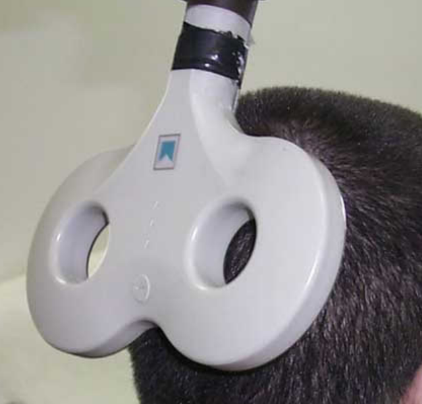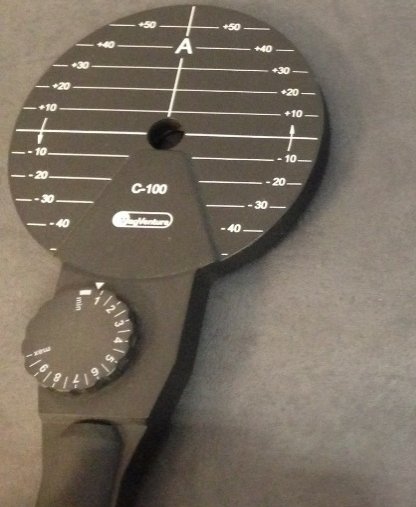"Large Field" Transcranial and Peripheral Magnetic Stimulation
PRINCIPLES
At the beginning of the twentieth century, neurologists frequently used
electricity, in the form of faradaic current (battery-powered D.C. current and
transformed into asymmetric alternating current by magnetic induction, to treat
hysterical paralysis. This technique, called "Faradisation", was applied at the
level of paralysed limbs, with some efficiency.
The major problem with this technique was its painful character. The current
must first pass through the skin before reaching the peripheral muscles and
nerves. The skin is very resistant, resulting in a loss of power and pain. This
technique was particularly used during the First World War, due to an epidemic
of functional neurological phenomena, with some efficacy but in a particularly
barbaric way (see "World War I" in the menu Patients). Thereafter, this method was largely
neglected.
In the 1980's, a first transcrânniene magnetic stimulation device (TMS) was
developed, allowing a large part of the cortical surface of the cerebral
convexity to be stimulated, in a non-painful way, with a circular coil. The
principle is as follows: a capacitor discharges into a circular coil to produce
a variable magnetic field. This magnetic field crosses the cranial box without
resistance and induces a circular current in the cerebral cortex which, due to
its constitution (several billion neurons and their axons), is assimilated to a
closed circuit. According to Faraday's law, a variable magnetic field induces an
electric current in this closed circuit, which, in the case of TMS, will
activate cortical neurons. The first use of this type of stimulation was aimed
at diagnosis. Each stimulation, resulting in a diffused muscular contraction of
the limbs, allows a latency calculation to explore the final driving path. In a
second phase, TMS was and still is very much used therapeutically but in a
"focal" way, i.e. stimulating a few cm² of cerebral cortex with a figure of
eight coil.

Coil in the shape of a figure of eight
This type of stimulation is only possible for pathologies where there is an
identified target. This is the case for depression (prefrontal dorsolateral
cortex) and neuropathic pain (motor cortex). Treatment is done in the form of
sessions of approximately 4000 stimulations on the target at a frequency of 5 to
20Hz (activator). The treatment usually consists of a series of five sessions
over five consecutive days and then monthly reminder sessions.
For functional neurological disorders, the networks are complex (see
Assumptions on origins of disorders) and it is probably for this reason that the SMT "focal"
does not work. In the absence of a target, a "large Field" SMT with a circular
coil is more logical.

Circular Coil
A session usually consists of about sixty transcranial stimulations at 1 Hz at
the engine threshold. Peripheral stimulation at 3 Hz on deficient or painful
regions has additional efficacy. This magnetic stimulation crosses the skin in a
painless way and creates deep currents that will stimulate the nervous nets
which, using a retrograde path, can influence the corresponding control systems
and improve the functional neurological symptoms. Peripheral magnetic
stimulation can be considered as the modern form of the faradisation of the
neurologists of the early twentieth century, more effective and above all much
less painful.
With paralysis, a single session can suffice. In fibromyalgia, three sessions
separated by three weeks are often necessary to determine if the patient
responds to this type of treatment. It will be necessary to do maintenance
sessions every 1 to 3 months. The therapeutic effect can be immediate (see
Fibromyalgia in the
Patient drop-down menu) or, more usually appear after a few days. But this
effect is transient, hence the need to repeat the sessions. When the patient
responds positively to the first stimulation sessions, there will never be a
decrease in efficacy after the following sessions. Over time, we can often, but
gradually, space the sessions.